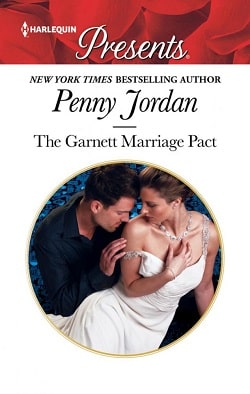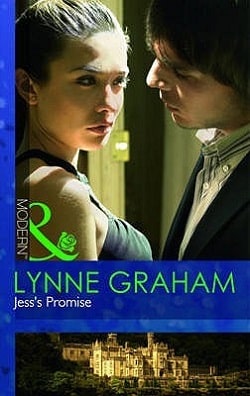The tall Spaniard who had carjacked al-Fadl last night had barely spoken a word as he drove the allamah’s car deep into this vast desert. After an hour’s drive, the Spaniard had stopped and ordered al-Fadl out of the car, leaving him in the darkness with no food or water.
Al-Fadl’s captor had provided no indication of his identity or any explanation for his actions. The only possible clue al-Fadl had glimpsed was a strange marking on the man’s right palm—a symbol he did not recognize.
For hours, al-Fadl had trudged through sand and shouted fruitlessly for help. Now, as the severely dehydrated cleric collapsed into the suffocating sand and felt his heart give out, he asked himself the same question he had been asking for hours.
Who could possibly want me dead?
Frighteningly, he could come up with only one logical answer.
CHAPTER 8
ROBERT LANGDON’S EYES were drawn from one colossal form to the next. Each piece was a towering sheet of weathered steel that had been elegantly curled and then set precariously on its edge, balancing itself to create a freestanding wall. The arcing walls were nearly fifteen feet tall and had been torqued into different fluid shapes—an undulating ribbon, an open circle, a loose coil.
“The Matter of Time,” Winston repeated. “And the artist is Richard Serra. His use of unsupported walls in such a heavy medium creates the illusion of instability. But in fact, these are all very stable. If you imagine a dollar bill that you curl around a pencil, once you remove the pencil, your coiled bill can stand quite happily on its own edge, supported by its own geometry.”
Langdon paused and stared up at the immense circle beside him. The metal was oxidized, giving it a burnt copper hue and a raw, organic quality. The piece exuded both great strength and a delicate sense of balance.
“Professor, do you notice how this first shape is not quite closed?”
Langdon continued around the circle and saw that the ends of the wall did not quite meet, as if a child had attempted to draw a circle but missed the mark.
“The skewed connection creates a passageway that draws the visitor inside to explore the negative space.”
Unless that visitor happens to be claustrophobic, Langdon thought, moving quickly on.
“Similarly,” Winston said, “in front of you, you will see three sinuous ribbons of steel, running in a loosely parallel formation, close enough together to form two undulating tunnels of more than a hundred feet. It’s called The Snake, and our young visitors enjoy running through it. In fact, two visitors standing at opposite ends can whisper faintly and hear each other perfectly, as if they were face-to-face.”
“This is remarkable, Winston, but would you please explain why Edmond asked you to show me this gallery.” He knows I don’t get this stuff.
Winston replied, “The specific piece he asked me to show you is called Torqued Spiral, and it’s up ahead in the far right corner. Do you see it?”
Langdon squinted into the distance. The one that looks like it’s a half mile away? “Yes, I see it.”
“Splendid, let’s head over, shall we?”
Langdon took a tentative glance around the enormous space and made his way toward the distant spiral as Winston continued speaking.
“I have heard, Professor, that Edmond Kirsch is an avid admirer of your work—particularly your thoughts on the interplay of various religious traditions throughout history and their evolutions as reflected in art. In many ways, Edmond’s field of game theory and predictive computing is quite similar—analyzing the growth of various systems and predicting how they will develop over time.”
“Well, he’s obviously very good at it. They call him the modern-day Nostradamus, after all.”
“Yes. Though the comparison is a bit insulting, if you ask me.”
“Why would you say that?” Langdon countered. “Nostradamus is the most famous prognosticator of all time.”
“I don’t mean to be contrary, Professor, but Nostradamus wrote nearly a thousand loosely worded quatrains that, over four centuries, have benefited from the creative readings of superstitious people looking to extract meaning where there is none … everything from World War Two, to Princess Diana’s death, to the attack on the World Trade Center. It’s utterly absurd. In contrast, Edmond Kirsch has published a limited number of very specific predictions that have come true over a very short time horizon—cloud computing, driverless cars, a processing chip powered by only five atoms. Mr. Kirsch is no Nostradamus.”
I stand corrected, Langdon thought. Edmond Kirsch was said to inspire a fierce loyalty among those with whom he worked, and apparently Winston was one of Kirsch’s avid disciples.
“So are you enjoying my tour?” Winston asked, changing the subject.
“Very much so. Kudos to Edmond for perfecting this remote docenting technology.”
“Yes, this system has been a dream of Edmond’s for years, and he spent incalculable amounts of time and money developing it in secret.”
“Really? The technology doesn’t seem all that complicated. I must admit, I was skeptical at first, but you’ve sold me—it’s been quite an interesting conversation.”
“Generous of you to say, although I hope I don’t now ruin everything by admitting the truth. I’m afraid I have not been entirely honest with you.”
“I’m sorry?”
“First of all, my real name is not Winston. It’s Art.”
Langdon laughed. “A museum docent named Art? Well, I don’t blame you for using a pseudonym. Nice to meet you, Art.”















